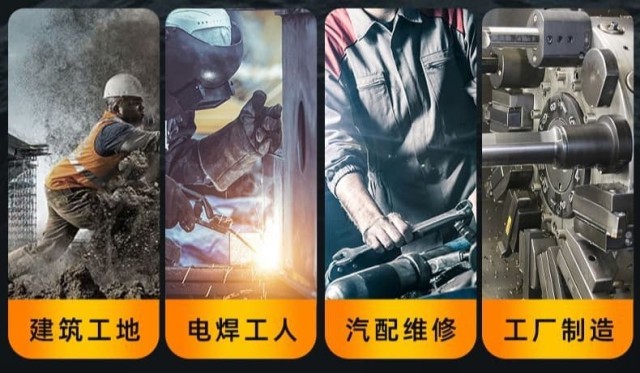Selecting the right work boot materials isn't just about durability—it's about matching material properties to your workplace's specific risks. From electrical hazards to extreme temperatures, the wrong choice can compromise safety and productivity. This guide breaks down material selection by hazard type, supported by ASTM standards and material science insights.
Choosing Work Boot Materials: Beyond Basic Durability
Work boots must address two critical factors: hazard protection and operational comfort. Research shows that 60% of workplace foot injuries occur due to improper footwear selection. The right materials mitigate risks while supporting long-term wearability.
Material Properties and Workplace Risks
Key considerations when evaluating materials:
- Chemical resistance: Nitrile rubber outperforms PVC against oils but degrades with ammonia exposure
- Thermal regulation: Moisture-wicking linings reduce heat stress in foundries
- Weight distribution: Carbon fiber toes reduce fatigue by ~30% compared to steel
"Have you considered how your boot's material reacts to incidental chemical splashes versus full immersion?"
Heavy Industrial Environments: Steel, Composite, and Beyond
Industrial settings demand materials that withstand crushing impacts, punctures, and prolonged abrasion.
Steel vs. Composite Toes: When to Use Each
| Material | Best For | Limitations |
|---|---|---|
| Steel toe | High-impact manufacturing | Conducts cold/heat |
| Carbon composite | Metal detector environments | Bulkier than steel |
| Alloy toe | Balanced weight/strength | Moderate cost premium |
Pro Tip: ASTM F2413-18 compliant toes must withstand 75 ft-lbs impact resistance regardless of material.
Electrical and Chemical Hazards: Insulation and Resistance
Electrical Hazard Protection (ASTM F2413/F2892-18)
- Boots must block 18,000+ volts with
- Full-grain leather with sealed stitching prevents conductivity
- Avoid metal eyelets or conductive sole materials
Chemical-Resistant Materials Comparison
- PVC: Superior for hydrochloric acid and bleach (EN 13832-2 certified)
- Nitrile rubber: Ideal for oil refineries but weak against ammonia
- Neoprene: Resists mild acids but fails with concentrated solvents
"Workers in pharmaceutical plants often overlook how boot seams become chemical entry points."
Extreme Temperatures: Insulation vs. Breathability
Arctic Conditions (-40°F/-40°C)
- Thinsulate™ linings retain heat without bulk
- Vulcanized rubber outsoles resist cracking
- Steel toes increase frostbite risk (switch to composites)
High-Heat Environments (Foundries/Welding)
- Aluminum toe caps reflect radiant heat
- Kevlar® stitching won't melt like nylon
- Mesh panels reduce heat buildup by ~25%
Balancing Safety and Comfort in Material Selection
Weight and Flexibility
- Fiberglass shanks provide arch support with 50% less weight than steel
- Athletic-style EVA midsoles reduce fatigue during 12-hour shifts
Moisture Management Strategies
- Hydrophobic leather uppers (e.g., oil-tanned) repel liquids
- Antimicrobial linings prevent fungal growth in humid environments
- Perforated tongues enhance airflow without compromising safety
Ready to Equip Your Workforce with Hazard-Specific Footwear?
3515 manufactures ASTM-compliant work boots tailored to your industry's unique risks—from chemical plants to arctic oil rigs. Our material scientists partner with distributors to optimize boots for your operational demands. [Contact 3515] today for bulk pricing on purpose-built safety footwear.
"The right materials don't just protect feet—they empower workers to perform safely in any condition."
Related Products
- Wholesale Customizable Suede Safety Boots - Puncture-Proof with Velcro Closure
- Puncture-Resistant Velcro Safety Boots for Wholesale & Custom Manufacturing
- Customizable Anti-Smash Safety Boots for Wholesale & Private Label Manufacturing
- Safety Footwear Wholesale Manufacturer for Custom OEM/ODM Production
- Wholesale Safety Footwear Manufacturer for Bulk & Custom OEM Orders
Related Articles
- Matching Men’s Work Shoe Safety Technologies to Workplace Hazards
- How to Choose Work Boots That Balance Safety, Comfort, and Durability for Your Job
- How to Choose Work Boots That Match Your Job's Safety Demands
- How to Choose Work Boots That Match Your Industry's Safety Needs
- How to Extend Work Boot Lifespan: Science-Backed Care for Safety & Savings



















